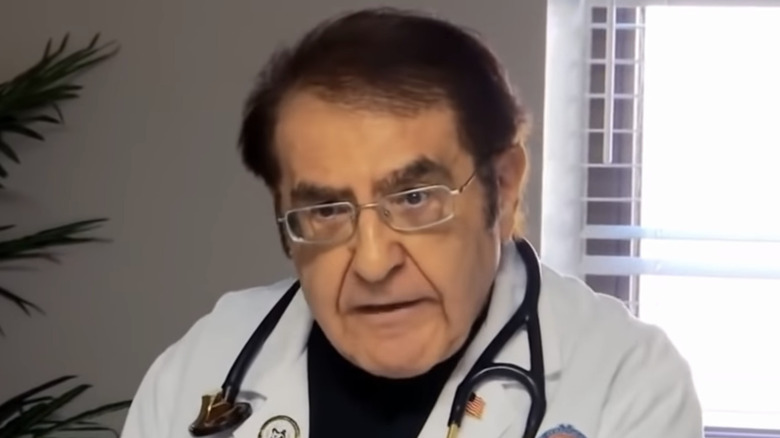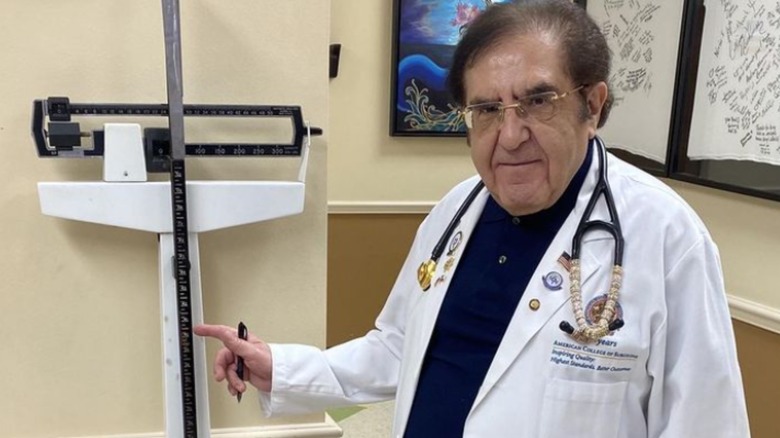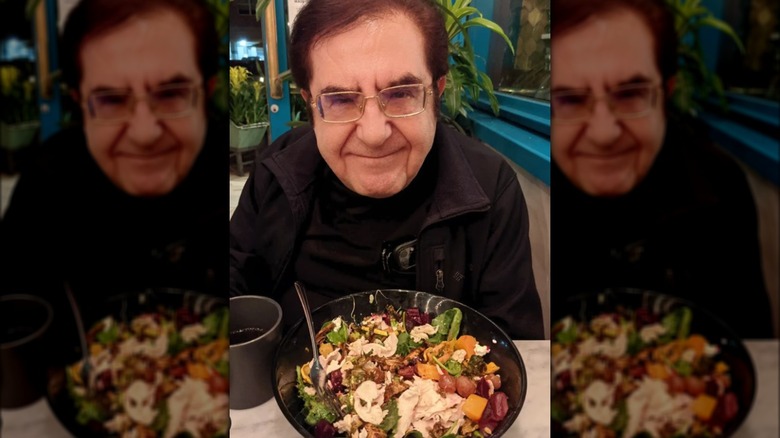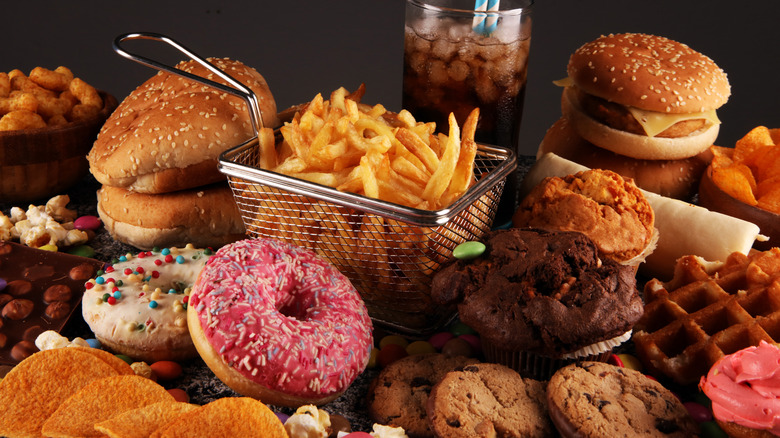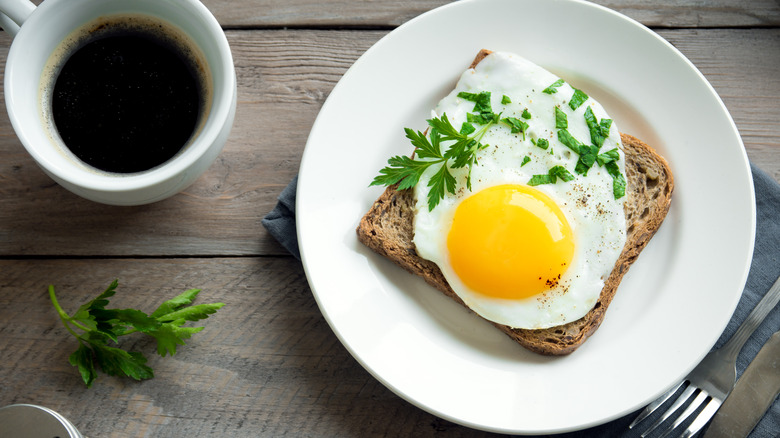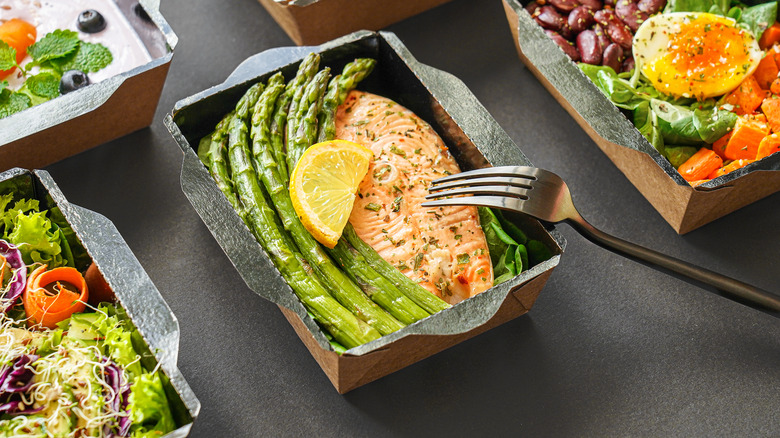What Dr. Now's Diet Plan From My 600-Lb Life Really Looks Like
Of the many TLC shows that television lovers become obsessed with, the hit show "My 600-Lb Life" is one of the most popular. Since 2012, the show has captivated viewers. Some get emotionally invested in the struggles of the participants, while others stay fascinated by their failures, successes, and health transformations.
The brains behind the participants' success, Houston-based obesity surgeon Dr. Younan Nowzaradan (Dr. Now), is known and loved for his ability to be compassionate yet skip the sugar-coated coddling. According to his website, Dr. Now accepts the most challenging, morbidly obese candidates that most other doctors have rejected. The famous doctor's mission statement, "Helping to provide a higher quality of life to those struggling with obesity," supports what he says consistently on the show — weight loss surgery is merely a tool to use toward a greater goal. As part of helping patients achieve that better quality of life, he requires his patients to adhere to a personalized diet plan prior to surgery; here's what this new diet plan entails.
Why Dr. Now requires patients to lose weight first
Dr. Now has been touted for taking on high-risk patients, including cases that other medical professionals won't. One requirement of being accepted for the "My 600-lb Life" weight-loss surgery is adhering to Dr. Now's diet plan. Per Healthline, the diet helps the patient lose weight, which reduces the risk of complications during surgery. But it also proves that patients will be able to adhere to a healthier lifestyle post-surgery, which also allows for maintenance or further weight loss if needed. The surgery is, after all, not a permanent solution to the weight problem, but it is a way to minimize further health risks and acts as a stepping stone in the right direction.
The real solution is the ability to make lifestyle changes, which Dr. Now teaches the patients with his diet plan. And he doesn't only advise on what foods to avoid for weight loss; the famous doctor also expresses the importance of being in the right frame of mind and even keeping the company of the right people. On Dr. Now's Instagram, for example, he posts the benefit of having a stable and positive support system. He shares in the caption, "If a patient doesn't have a supportive community, it's almost impossible for them to be successful in the long term." The pre-surgery program is one that will help prepare the patient for the surgery and beyond.
The foods Dr. Now advises his clients to eat
The doctor who takes challenging cases has written a book detailing his program, "The Scale Does Not Lie, People Do." Dr. Now cleverly uses the acronym "FAT" to help readers easily understand the main components of his weight-loss diet, which he has posted to Instagram for all to see.
F stands for frequency, meaning how many times in a day you eat. This program advises up to three meals a day without snacks. The A is for the number of calories consumed. This diet calls for up to 1,200 calories per day, but, per DietHand, the doctor may prescribe only 800 calories a day for certain cases. These calories should be equally divided among feeding times. The T in "FAT" stands for type, as in the type of foods that are allowed.
So exactly what kind of food would you be eating on Dr. Now's plan? Per Better Me., foods very low in calories, rich in fiber, and unprocessed are what this diet is all about. Acceptable foods on this plan include low-calorie vegetables like green beans, broccoli, celery, leafy greens, and carrots. Some fruits are okay, as long as they are low in sugar, such as berries. Whole grains, flax seeds, and low- or no-fat dairy are also suggested. Healthline reports that protein sources can include tofu, beans, egg whites, lean meats, chicken or turkey breast, and fish. The simpler the food, the better.
Foods to avoid on Dr. Now's plan
While there is a decent variety of foods you can eat on this plan, there is also a large variety of foods that are forbidden. Of course, on "MY 600-lb Life," each diet is specifically tailored toward the patient, but Dr. Now has also taken to his Instagram for motivating the masses, even selling "Pizza is not part of your diet" refrigerator magnets.
Per Healthline, there's a lot more than pizza that you'll have to avoid when following Dr. Now's diet plan. Say goodbye to starchy vegetables, such as potatoes and corn, as well as refined carbs like cereal, chips, cakes, cookies, pastas, and rice. Full-fat dairy products are also a no, as are many nuts and seeds including peanuts, pistachios, and sunflower seeds. You'll also have to pass on alcoholic drinks, fruit juices, and sodas.
The diet places an emphasis on small portions and low-calorie foods, aiming for quick weight loss. It may be restrictive, but extreme health circumstances call for extreme measures.
What does a meal plan look like on Dr. Now's diet
You might be curious about what a 1,200 calorie meal plan looks like. Healthline and DietHand offer sample menus that adhere to Dr. Now's diet, offering a better perspective.
You can choose two eggs, a slice of whole-grain bread topped with one tablespoon of margarine, and one cup of skim milk for breakfast. For lunch, you might have 4 ounces of grilled chicken and 1 cup of broccoli, and for dinner, 3 ounces of broiled salmon with asparagus spears. As for snacks and desserts, well, this is technically a no-sugar diet, and the point is to even eliminate healthy foods that may be high in calories, so desserts are off the table. DietHand suggests a pickle spear wrapped in one slice of ham as a snack, but as appetizing as that sounds, it's unlikely to satisfy anyone.
If this sample meal plan doesn't sound like much, that's because it 's equal to just about 1,200 calories. Per the 2015-2020 Dietary Guidelines for Americans issued by the U.S. Office of Disease Prevention and Health Promotion, the average person needs between 1,600 and 3,000 calories a day, but that's dependent on the person's activity level and attributes, such as height and weight. Again, it's important to note that a calorie deficit will result in weight loss, and this diet does help those with certain medical issues, but the average person generally doesn't need to be so restrictive (via Healthline).
The up and down sides of Dr. Now's diet
It's important to note that Dr. Now's diet of 800–1,200 calories a day is intended (mostly) for those preparing for gastric surgery, such as a by-pass. The upside of this plan is that the allowed foods do include all the nutrients that are necessary for a healthy body. Also, for those who need to lose weight fast, the extreme calorie deficit allows for that.
The downside to this diet, especially if a patient is used to consuming double or triple the allotted daily calories, is the hunger pains. As one 2015 review in the International Journal of Obesity reports, restricting your calories can disrupt the hormones that regulate hunger and may lead to overeating. According to DietHand, extreme calorie restriction can also lead to unwanted symptoms, such as dizziness, poor sleep, irritability, and fatigue.
Remember, Dr. Now generally deals with high-risk cases, such as those on "MY 600-lb Life," where the benefits of the diet outweigh the downsides. But for the average person without health risks, a super low-calorie diet may not be the best choice.

